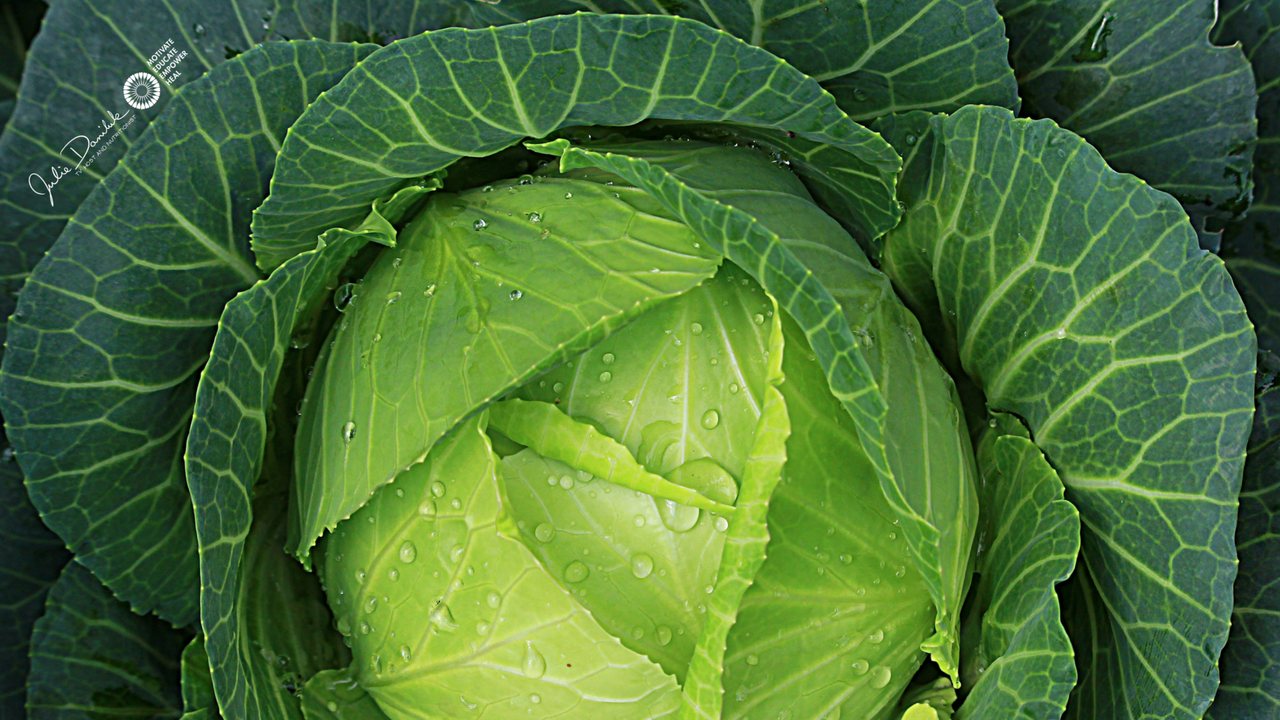Cabbage | why every mighty cleanse includes some crunch

Cabbage is synonymous with detoxification and weight balance because it cleanses your liver and fills you up for only 17 calories a cup!
Add lots of cabbage to your healthy Live-It & benefit from an ongoing cleanse... and more!
1. Cabbage juice can be a miracle healer for your GI tract.
Many studies show that drinking fresh cabbage juice can heal ulcers much faster than conventional treatments.1
2. Cabbage can fight breast cancer.
Cabbage is part of the popular cruciferous family of vegetables that contain molecules called isothiocyanates. These molecules are known for their anti-cancer properties and have an affinity for fighting leukemia, breast cancer, prostate cancer and lung cancer.2
3. Cabbage is an excellent source of Vitamin K.
Your bones depend on Vitamin K for strength.3 All types of cabbage are an excellent source of this fat-soluble vitamin which helps in the mineralization of your bones. A deficiency of Vitamin K can cause minerals to be deposited into other body tissues, rather than in your bones, and can lead to damage, such as the hardening of blood vessels.4
4. Cabbage contains antioxidants.
Cabbage has high levels of polyphenols – a large group of molecules recognized for their antioxidant power. One of the great things polyphenols do is protect your body from oxidative damage, especially your skin.5 Researchers show that with a diet high in polyphenols you'll experience less damage from UV rays than with poor polyphenols intake.
5. Cabbage contains essential fatty acids.
Cabbage has a surprisingly good content of essential fatty acids (EFAs), especially alpha-linolenic acid (ALA, a type of Omega-3).6 EFAs are more needed with inflammatory conditions – research shows that EFAs significantly improve inflammation in cystic fibrosis.
Please Note : If you have a thyroid condition, speak to your doctor before consuming cruciferous vegetables. For more information on thyroid function, click here.
References
- Garnett Cheney MD: “Rapid Healing of Peptic Ulcers in Patients Receiving - Fresh Cabbage Juice.” Department of Medicine, Stanford University School of Medicine, San Francisco. Vol.70,No.1 1949
- Xiang Wu, Yu Zhu, Huiqin Yan, Boning Liu, Ying Li, Qinghua Zhou and Ke Xucor: “Isothiocyanates induce oxidative stress and suppress the metastasis potential of human non-small cell lung cancer cells.” BMC Cancer. 2010; 10: 269. Published online 2010 June 9. doi: 10.1186/1471-2407-10-269 PMCID: PMC2891640
- Kidd PM1: “Vitamins D and K as pleiotropic nutrients: clinical importance to the skeletal and cardiovascular systems and preliminary evidence for synergy.” Altern Med Rev. 2010 Sep;15(3):199-222.
- Phyllis A Balch, CNC ”Prescription for Nutritional Healing: Elements of Health“ Avery (Penguin Group) 2006
- Joi A. Nichols1 and Santosh K. Katiyar: “Skin photoprotection by natural polyphenols: Anti-inflammatory, anti-oxidant and DNA repair mechanisms.” Arch Dermatol Res. 2010 Mar; 302(2): 71. Published online 2009 Nov 7. doi: 10.1007/s00403-009-1001-3 PMCID: PMC2813915 NIHMSID: NIHMS158015
- Znidarcic, D., Ljubljana Univ. (Slovenia). Biotechnical Fac., Agronomy Dept. Vidrih, R, Ljubljana Univ. (Slovenia). Biotechnical Fac., Food science and Techology Dept.: “Content of essential fatty acids in cabbage (Brassica oleraceae L.)” Food And Agriculture Organization of the United Nations [2009]

